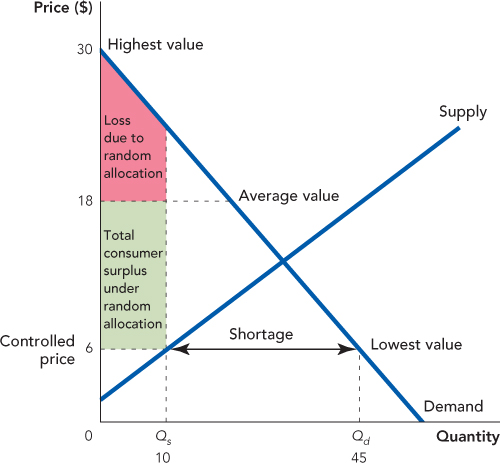FIGURE 8.7

Consumer Surplus Falls Under Random Allocation When there is a price control, the buyers with the highest-valued uses cannot outbid other buyers, so goods will flow to any buyer willing to pay more than the controlled price of $6. If goods are allocated randomly to buyers with values between $30 and $6, the average value will be $18. Consumer surplus under random allocation is the green area. If goods were allocated to the highest-valued uses, consumer surplus would be larger, the red plus green areas. Thus, a price control misallocates resources, reducing consumer surplus.
[Leave] [Close]